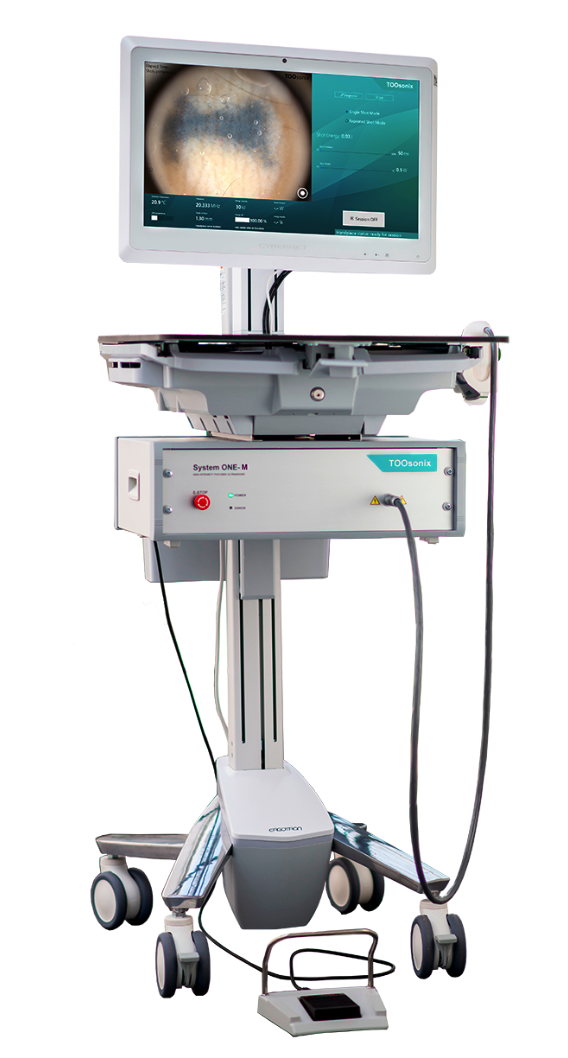High-Intensity, Focused Ultrasound Used to Treat Basal Cell Carcinoma
 At Bispebjerg and Roskilde Hospitals, University of Copenhagen, Denmark, the first patients with basal cell carcinoma have been treated in a new clinical study using the System ONE-M device from TOOsonix A/S.
At Bispebjerg and Roskilde Hospitals, University of Copenhagen, Denmark, the first patients with basal cell carcinoma have been treated in a new clinical study using the System ONE-M device from TOOsonix A/S.
The clinical study will include 40 patients diagnosed with superficial BCC. The HIFU treatment will be administered as a single dosing of approximately 1-2 minutes of active focused ultrasound. The treatment does not require any local anesthetics and no special after-care. Study participants are monitored with regular follow-up visits over 12 months after treatment. An interim report with evaluation of cure rate and safety profile 3 months after treatment is planned.
The TOOsonix high intensity focused ultrasound system used in the study delivers highly accurate doses of energy to focal points in a chosen depth. It can therefore directly and selectively treat areas affected by basal cell carcinoma, typically invading the outer layer of the human skin.
"After initial medical CE-marking of the system in June 2020, treatment data coming from selected hospitals and private clinics have been very positive, demonstrating that the system is very versatile, and can be used to treat a large range of different dermatological conditions. We have continued to support leading university hospitals with the devices and information necessary to start larger formalized clinical studies. We are therefore now very proud to see this first study on a broad range of patients suffering from the most common cancer in the world," said Torsten Bove and Tomasz Zawada, founders of TOOsonix.
Professor, Joergen Serup, MD, who lead the study at Bispebjerg Hospital, commented, "High frequency HIFU has a significant potential for future use in treatment of BCC and other dermatological conditions. In experimental work, it has already been indicated that the device has important practical and resource-saving advantages over photodynamic therapy (PDT), which is a leading therapy in superficial and early-stage BCC. Noteworthy is the reduced pain-level during treatment. HIFU can be applied to multiple sites of the body in one short session, and therefore has the potential to replace cumbersome and resource-demanding PDT in the future. Recurrent BCC after any previous treatment is a logic indication, taking advantage of the focused and targeted principle of the method. The method is for the same reason expected to carry low risk of post-treatment scarring and dyschromia. The method can work well in hospitals as well as private practice settings."